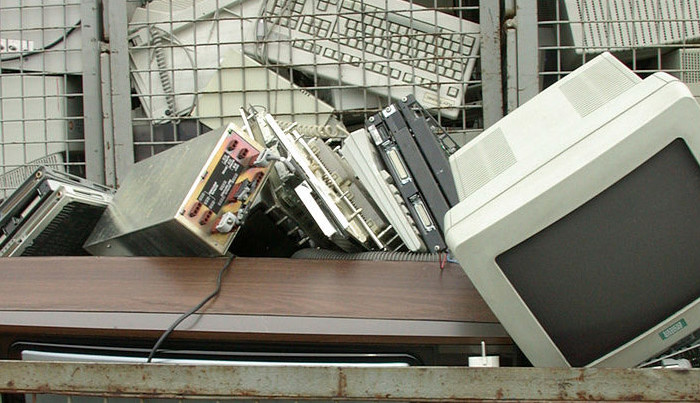High Intensity Pulses Separate E-waste
May 27, 2019
on
on

By using short pulsed electrical discharges of high field strength, it is possible to separate and shred electronic scrap quickly, cleanly and inexpensively. Even plastics can be separated from metals.
Researchers at Kumamoto University in Japan have developed a novel process that could make the recycling of electronic waste more effective. The short pulses generate high levels of electric field strength, which impart large differential forces to the materials commonly found in e-waste, to separate connected materials and break them down into small pieces.
The project demonstrates the principal use of electrically generated shockwaves for effective material separation. Today, electronic waste is mostly mechanically crushed and pre-sorted by hand which is time consuming, expensive, sometimes even dangerous to health.
Researchers at Kumamoto University in Japan have developed a novel process that could make the recycling of electronic waste more effective. The short pulses generate high levels of electric field strength, which impart large differential forces to the materials commonly found in e-waste, to separate connected materials and break them down into small pieces.
3.5 megapascals
When the electronic scrap is placed between the two electrodes the pulsed energy creates a pressure wave of up to 3.5 MPa or 35 bar. This not only shreds the material, but allows the waste products to be separated into its constituents. The process works well on old CDs and DVDs. The disks are made of polycarbonate with a thin, vapor-deposited metal layer. It takes around 30 pulses to separate the materials. The energy costs are very low and work out at about €0.003 per 100 processed CDs (in Japan).Shock waves
The researchers monitored the effects of the resulting shock waves using a high-speed Schlieren photography. At the beginning of the separation process, two light emissions in blue and orange show as plasma discharges. After the light flashes and with the decay of the pulses the material is seen to fragment and fly apart.The project demonstrates the principal use of electrically generated shockwaves for effective material separation. Today, electronic waste is mostly mechanically crushed and pre-sorted by hand which is time consuming, expensive, sometimes even dangerous to health.
Read full article
Hide full article


Discussion (0 comments)